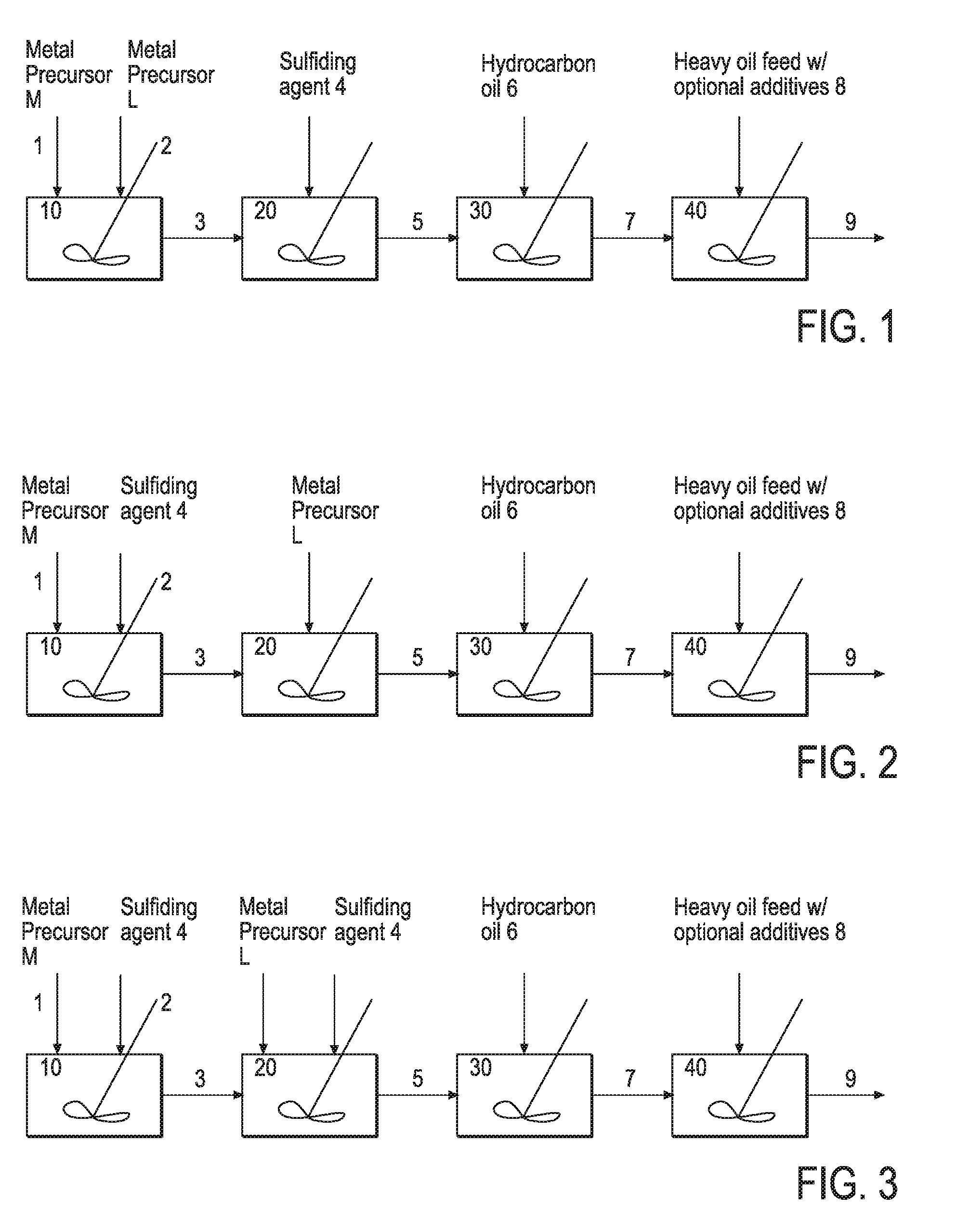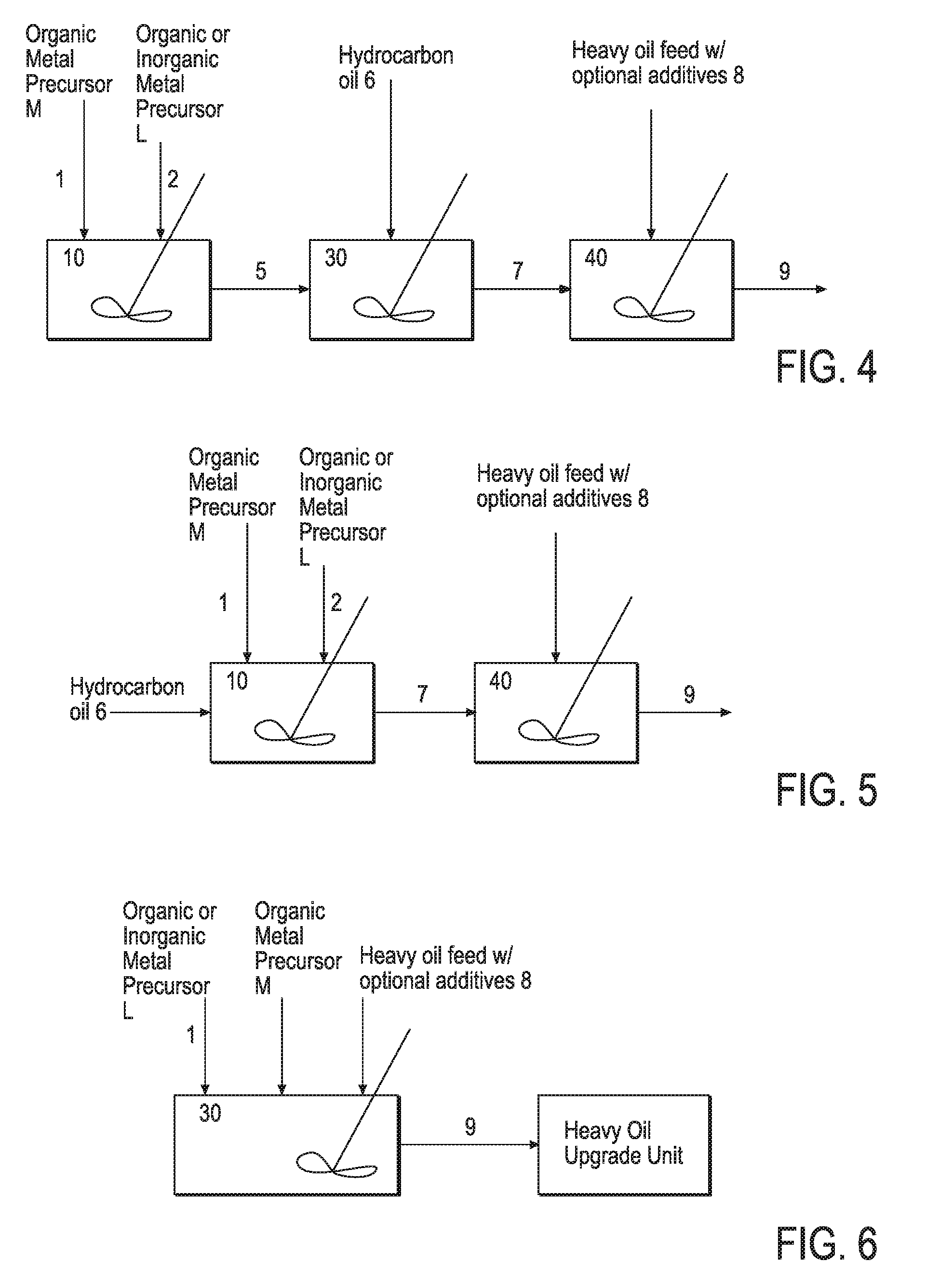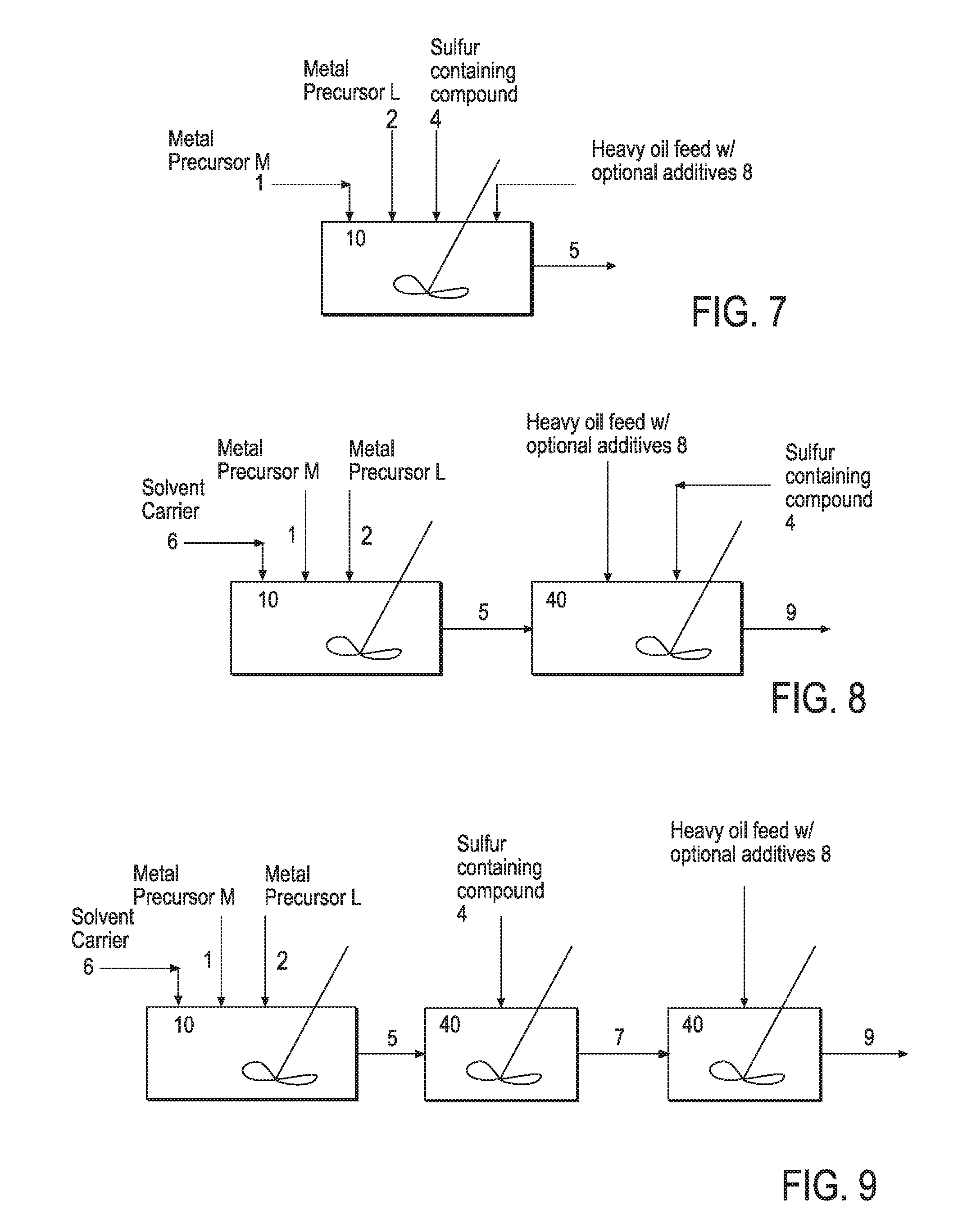Hydroprocessing bulk catalyst and methods of making thereof
a technology of bulk catalysts and hydroprocessing, which is applied in the direction of physical/chemical process catalysts, organic compounds/hydrides/coordination complexes catalysts, metal/metal-oxides/metal-hydroxide catalysts, etc., and can solve the problem of requiring a considerable amount of upgrading
- Summary
- Abstract
- Description
- Claims
- Application Information
AI Technical Summary
Benefits of technology
Problems solved by technology
Method used
Image
Examples
examples
[0166]The following illustrative examples are intended to be non-limiting. Unless specified otherwise, the catalytic activity of the catalysts prepared in the examples are tested for Hydrodenitrogenation (HDN), Hydrodesulfurization (HDS), as well as API gravity change and Microcrystalline Carbon Residue (MCRT).
[0167]The feedstock for use in the Examples is a mix of 60 wt. % heavy oil (vacuum resid or VR) and 40 wt. % cycle oil diluent, with the properties as indicated in Table 1.
[0168]
TABLE 1Property60 / 40 VR / cycle oilCycle oil diluentRefractive Index @ 20° C.1.63251.6405API gravity, 60° F. / 60° F.1.52.9MCR, wt. %19.124.301000+° F., wt. % (SimDist)46.60.8800+° F., wt. % (SimDist)60.120.0650+° F., wt. % (SimDist)78.145.0Nitrogen, wt. ppm55001600Sulfur, wt. %3.561.01H / C molar ratio1.2801.041
Comparative Ni—Mo Bulk Catalyst Example 1
[0169]2663 g of ammonium dimolybdate was combined with 1850 g of hot deionized (DI) water and 1566 g of ammonium hydroxide solution (28% in water). The mixtur...
examples 2-4
[0170]In these examples, three oil-soluble, sulfur-rich, iron and zinc catalyst precursors were employed: iron (III) dimethyldithiocarbamate (Fe-DTC), zinc diethyldithio-carbamate (Zn-DTC), and zinc diispropyldithiophosphate (Zn-DTP). Example 3 is a mixed Fe / Zn catalyst, wherein 1:1 weight ratio of Fe:Zn was used with a mixture of iron (III) dimethyldithiocarbamate and zinc diethyldithio-carbamate.
[0171]The catalysts were formed in-situ in the amount of 1.7 wt. % on metal basis of VR feed (60 / 40 mixture of VR to cycle oil), wherein 130 g sample of the VR feed was mixed with the metal precursors, forming sulfided catalysts in-situ. The VR samples including catalysts were added to 1 L batch reactor, where it was pressurized with 1600 psig hydrogen (at 80° F.), heated to 825° F. in 2.5 hours and soaked at that temperature for 2 hours, then rapidly cooled, and products collected and analyzed.
[0172]Liquid products were separated via filtration, and analyzed for refractive index at 20° C....
example 5
[0178]In this example, a number of oil-soluble, sulfur-rich, iron and zinc catalyst precursors were employed at different Fe:Zn ratios: iron (III) dimethyldithiocarbamate (Fe-DTC), zinc diethyldithio-carbamate (Zn-DTC). The catalysts were formed in-situ in the amount of 2 wt. % of total metals relative to VR, wherein 130 g sample of the VR feed (60 / 40 mixture of VR to cycle oil) was mixed with the metal precursors. The VR samples including catalysts were added to 1 L batch reactor, where it was pressurized with 1600 psig hydrogen (at 80° F.), heated to 825° F. in 2.5 hours and soaked at that temperature for 2 hours, then rapidly cooled, and products collected and analyzed, in a procedure similar to Examples 2-4.
[0179]From the results shown in Table, it is observed that the mixed Fe—Zn catalyst had the highest catalytic activity at Fe:Zn weight ratios in the vicinity of 1:1; with Zinc component content of 60 wt. % (in total Fe+Zn on metals basis) being desirable for feed upgrading.
[0...
PUM
| Property | Measurement | Unit |
|---|---|---|
| 2-θ angles | aaaaa | aaaaa |
| pressure | aaaaa | aaaaa |
| temperature | aaaaa | aaaaa |
Abstract
Description
Claims
Application Information
 Login to View More
Login to View More - R&D
- Intellectual Property
- Life Sciences
- Materials
- Tech Scout
- Unparalleled Data Quality
- Higher Quality Content
- 60% Fewer Hallucinations
Browse by: Latest US Patents, China's latest patents, Technical Efficacy Thesaurus, Application Domain, Technology Topic, Popular Technical Reports.
© 2025 PatSnap. All rights reserved.Legal|Privacy policy|Modern Slavery Act Transparency Statement|Sitemap|About US| Contact US: help@patsnap.com



